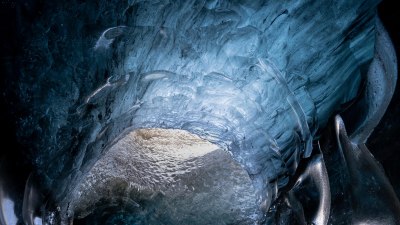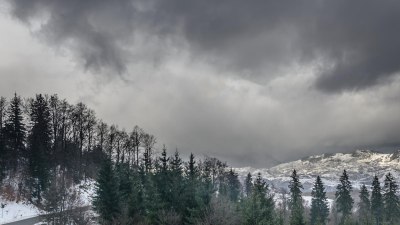How Underground Ice Affects Weather on the Surface
Explore the impact of underground ice on surface weather patterns and climate changes.

Underground ice, also known as permafrost, plays a crucial role in influencing weather patterns and the overall climate of the Earth. As more research is conducted, scientists discover that the implications of permafrost extend beyond just being a frozen layer of soil; it significantly impacts surface weather systems as well.
The Formation of Underground Ice
Permafrost is defined as ground that remains completely frozen for at least two consecutive years. This icy layer forms in cold regions when the temperature consistently falls below freezing, causing water in the soil to freeze. This frozen soil acts as a thermal barrier, insulating the underlying layers from the warmer temperatures above, significantly affecting the local climate.
Impact on Surface Temperature
One of the primary influences of underground ice on surface weather is its effect on temperature regulation. The presence of permafrost can stabilize surface temperatures during the year. In winter, the icy ground retains cold, preventing the upper layers of soil from warming significantly, while in summer, it limits how much the heat can penetrate deep into the ground. Consequently, areas with extensive permafrost often experience cooler temperatures compared to regions without it.
Influence on Local Weather Patterns
Underground ice affects local weather by altering moisture availability and evaporation rates. Since permafrost impedes the natural drainage of water, it can create wetlands in areas that typically would be dry. Consequently, these wetlands can influence local microclimates, leading to increased humidity and precipitation in the surrounding areas. Such changes in moisture can have profound effects on plant life and biodiversity in these regions.
Climate Change and Thawing Permafrost
As global temperatures rise due to climate change, permafrost is beginning to thaw at an unprecedented rate. This thawing releases previously trapped greenhouse gases, such as methane and carbon dioxide, into the atmosphere, exacerbating the effects of climate change. This not only contributes to global warming but also alters surface weather patterns significantly. For instance, as permafrost thaws, it reduces the insulating layer that keeps the ground cold, leading to even warmer temperatures and changes in precipitation patterns.
Feedback Loops of Permafrost Thaw
The thawing of underground ice creates a feedback loop that can accelerate climate changes. Warmer temperatures lead to more thawing, which in turn releases more greenhouse gases, further increasing global temperatures. This phenomenon can result in unpredictable shifts in climate zones, affecting agricultural practices, water availability, and even natural disaster frequencies. Regions that were once stable may start experiencing extreme weather events, such as storms or heavy rainfall.
The Role of Underground Ice in Weather Extremes
Studies have demonstrated that the stability provided by underground ice can help mitigate extreme weather events. However, as permafrost thaws, this stability diminishes, leading to more extreme fluctuations in weather. For example, regions that previously experienced mild winters may face harsher cold spells, while summer rainfall patterns could shift dramatically, increasing the risk of flash floods. This can disrupt local ecosystems and human activities, leading to significant economic and social challenges.
Impacts on Ecosystems
The changes brought about by underground ice thawing extend beyond human concerns; they impact entire ecosystems. The altered moisture levels can affect plant growth, leading to shifts in vegetation zones. Wildlife that depends on these stable conditions may also face challenges, leading to changes in species distribution and potentially endangerment of local wildlife.
Mitigation and Adaptation Strategies
Given the profound effects of underground ice on surface weather, it is essential to develop effective mitigation and adaptation strategies. This includes monitoring permafrost to understand its effects on greenhouse gas emissions and developing sustainable practices that can cope with the changing climate. Implementing policies that reduce carbon footprints and enhance natural systems to buffer against climate impacts will be crucial in dealing with these challenges.
In conclusion, underground ice significantly impacts surface weather and climate. As climate change progresses, understanding these connections will become increasingly important for preparing and mitigating future weather-related challenges. Scientific research continues to uncover the complexities of these interactions, highlighting the urgency of addressing climate change effectively.











